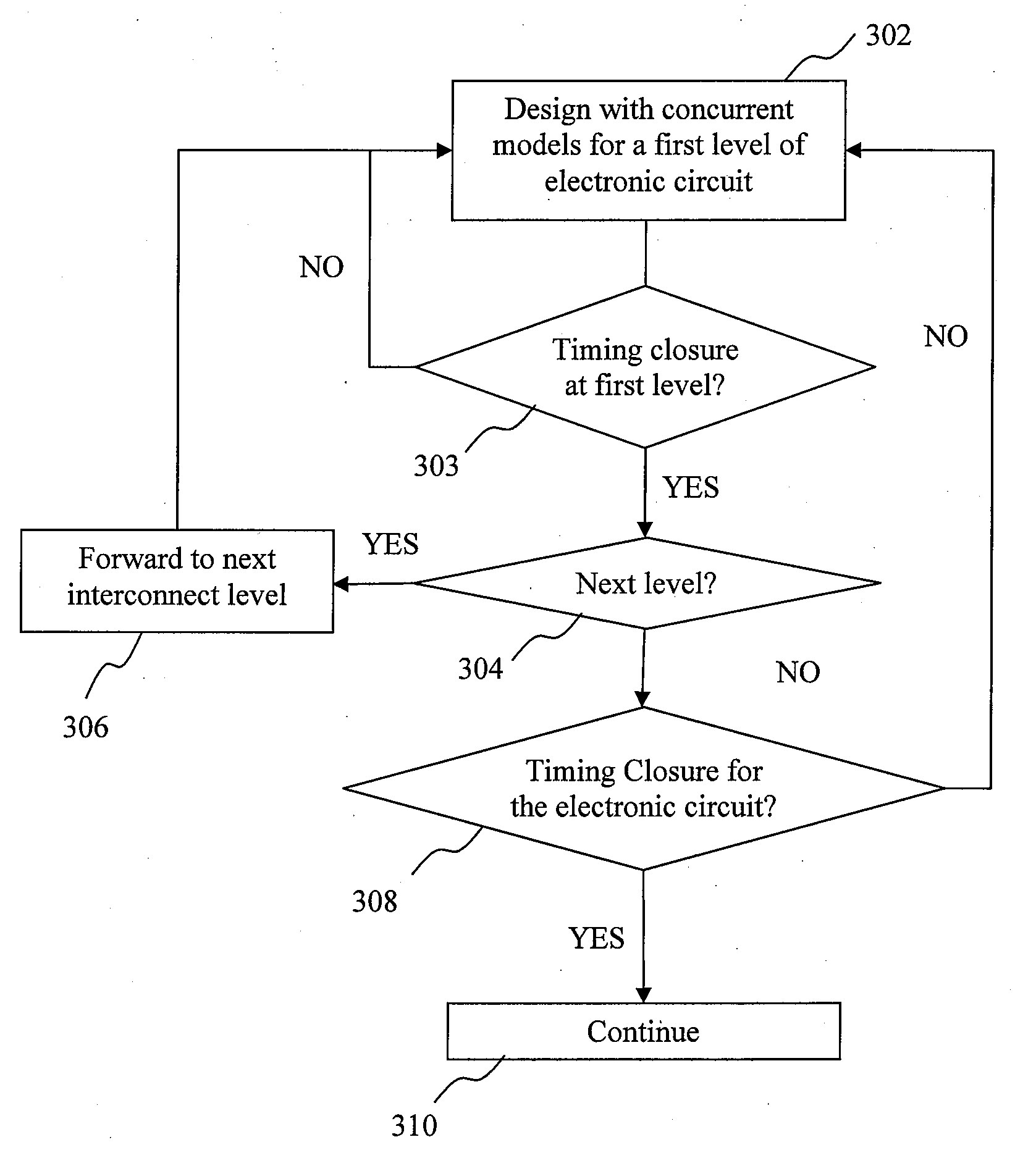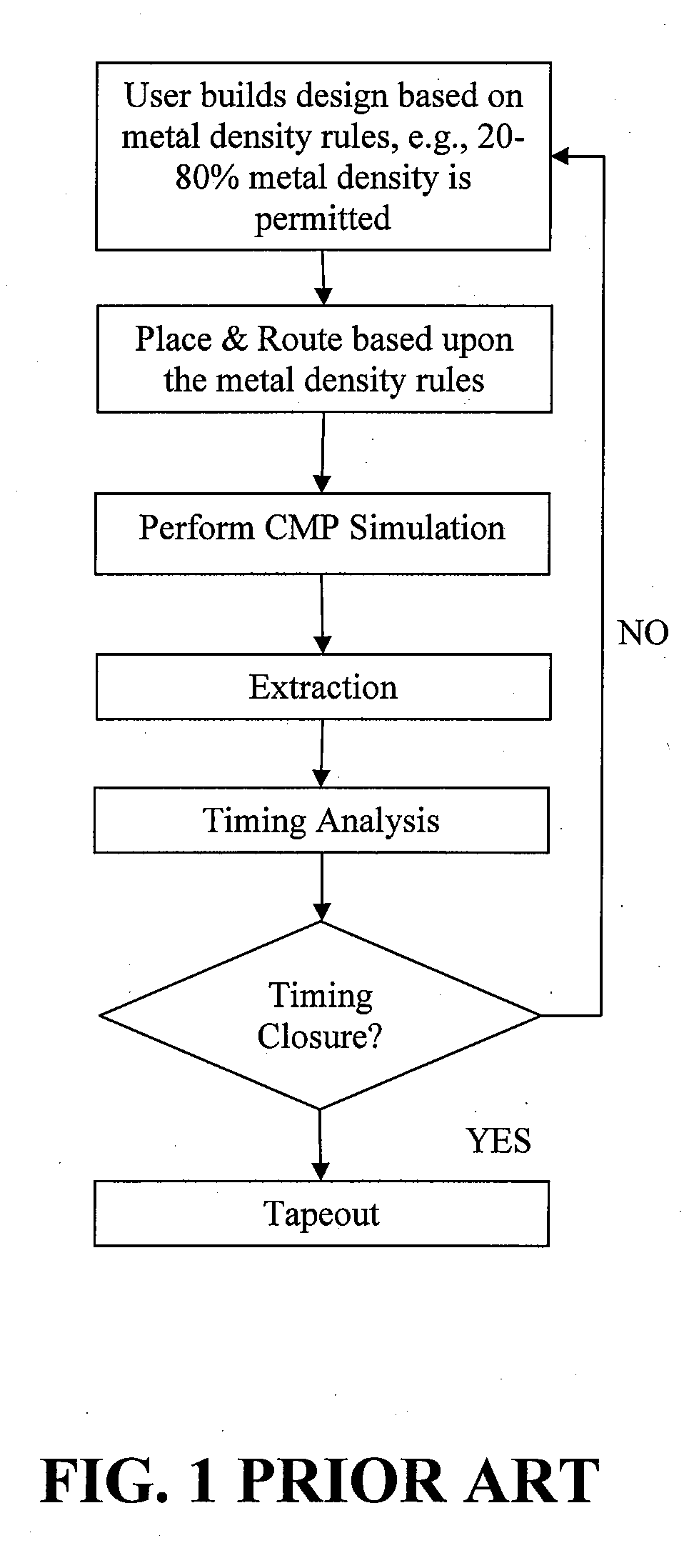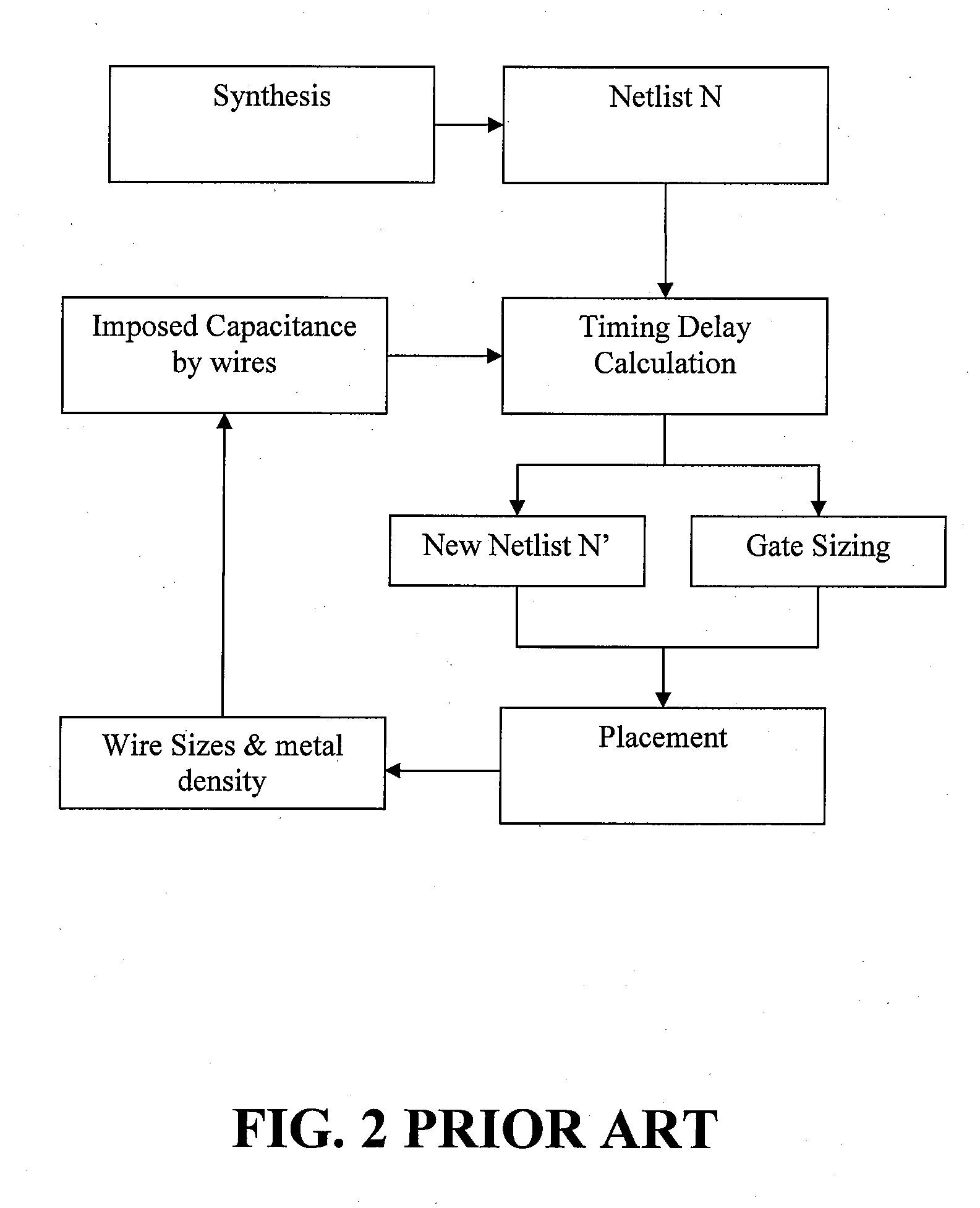Method, system, and computer program product for timing closure in electronic designs
a technology of electronic circuit design and timing closure, applied in the field of timing closure method, system and computer program product in electronic design, can solve the problems of complex semiconductor fabrication process, increasing difficulty in timing closure, and profound challenges in electronic circuit design
- Summary
- Abstract
- Description
- Claims
- Application Information
AI Technical Summary
Benefits of technology
Problems solved by technology
Method used
Image
Examples
Embodiment Construction
[0023]The present invention is directed to an improved method, system, and computer program product for an electronic design tool with concurrent models for fabrication, lithography, metrology, and / or imaging processing processes or techniques such as the resolution enhancement techniques (RET). Some embodiments of the present invention utilize the above method, system, and / or computer program to produce more effective and accurate performing timing closure for electronic design. As noted above, conventional methods and systems neglects the impact of variation of surface topology on the silicon and thus either use unnecessary computation resources to produce the results or even to produce unsatisfactory results. The proposed methodologies may be applied at least to the fields of placement, routing, trial route, global route, detailed route, and floorplanning.
[0024]Various embodiments of the invention may be implemented in numerous ways, including as software, hardware (e.g., an elec...
PUM
 Login to View More
Login to View More Abstract
Description
Claims
Application Information
 Login to View More
Login to View More - R&D
- Intellectual Property
- Life Sciences
- Materials
- Tech Scout
- Unparalleled Data Quality
- Higher Quality Content
- 60% Fewer Hallucinations
Browse by: Latest US Patents, China's latest patents, Technical Efficacy Thesaurus, Application Domain, Technology Topic, Popular Technical Reports.
© 2025 PatSnap. All rights reserved.Legal|Privacy policy|Modern Slavery Act Transparency Statement|Sitemap|About US| Contact US: help@patsnap.com



